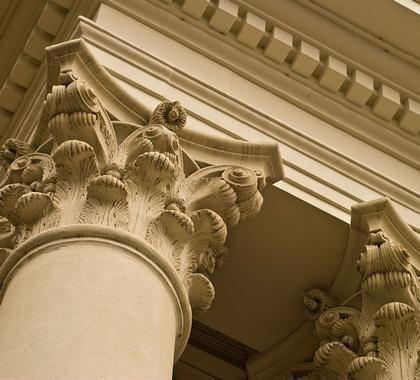Tuition freezes are gaining popularity across the country. Earlier this year, university systems in Virginia and Pennsylvania announced tuition would not rise in the next academic year, saving students and parents millions of dollars.
Purdue University, a public institution in Indiana, started the tuition-freeze trend in 2013. Under the leadership of its president, Mitch Daniels, Purdue instituted a freeze on all tuition and fees at its flagship campus in West Lafayette, Indiana. Tuition has stayed flat ever since—more than half a decade. Since then, enrollment has increased, students have a more affordable education, and Purdue continues to thrive.
The accompanying table shows per-student spending at Purdue in 2012, the year before the freeze began, and 2017, the most recent year for which data are available.
University administrators, governing boards, and state lawmakers can learn a lot from Purdue’s success.
Cut Wasteful Spending
To hold the line on tuition, Daniels increased revenue from other sources while cutting wasteful spending. Many of Daniels’ cost-cutting measures have been well-publicized.
“The changes range from the mundane, such as selling off ten of its automobiles, to the path-breaking, such as forgone merit increases by all personnel at high administrative levels,” as Stephanie Keaveney and I noted in a Martin Center article in 2016. “The school has also streamlined purchasing, cut rental storage costs in half, and repurposed used office furniture instead of buying new.”
Daniels also axed the university’s $185,000 lobbying budget, fired several highly paid administrators, and eliminated low-enrollment academic programs.
Purdue’s per-student costs show these small changes have added up.
In his first two years at the university, Daniels cut the budget by $40 million. After accounting for inflation, Purdue’s per-student expenses fell in almost every category, including those that generally fall under “administration”: academic support, institutional support, and student services.
Donations Increased
At the same time, Daniels increased revenue from out-of-state tuition and fees, private fundraising, and other sources.
Purdue’s tuition revenue per student increased modestly between 2012 and 2017, despite the freeze, partly because the number of foreign and out-of-state students increased from just under 20,000 in fall 2012 to 22,738 in 2017. The total number of in-state students decreased by 4 percent during the same period, from 19,689 to 18,835. In-state students pay significantly lower tuition than these others.
A much more significant contributor to Purdue’s increased revenue has been private fundraising. This year, Purdue’s Day of Giving raised $41.6 million, setting the fifth-straight record for a 24-hour higher education fundraising campaign.
Over the past six years, Purdue’s Day of Giving has raised $146.9 million in gifts. The value of the Purdue system’s endowment now stands at more than $2.5 billion—up from $2 billion in 2012. Officials at Purdue say market volatility is responsible for some of the change in endowment revenue.
Virginia Hits Taxpayers Harder
In May, Virginia public colleges announced a tuition freeze. Although it’s certain to help many students and parents who pay the bills, the costs will be borne by Virginia’s taxpayers. The freeze was a result of $57.5 million of “incentivized funding” being added to the state budget for colleges to freeze their tuition for in-state students.
Purdue managed its tuition freeze without additional state funds. That’s despite the fact that—as universities go—Purdue was lean even before Mitch Daniels arrived. Now, it spends significantly less than its peers. In 2017, the average per-student expenditure among large, high-research land-grant universities was $42,779. Purdue’s was $38,747.
Nationally, public universities receive an average of 28 percent of their core operating revenues from the legislature. For Purdue, it’s less than 20 percent. And during the freeze, Purdue’s revenue from state and local appropriations decreased, after adjusting for inflation, from $8,267 to $7,551 per student.
Cut Budgets, Not Quality
Throughout the changes, Purdue has maintained its academic quality. Since the tuition freeze and budget cuts, student retention rates have held steady. In every year since the cuts, more than 90 percent of Purdue freshmen have returned to campus for their sophomore year. Purdue’s graduation rate increased in the three years for which data are available. Just 55.9 percent of students who began at Purdue in 2012 graduated within four years. For students who began in 2014, that figure rose to 60.3 percent. Data on more recent cohorts are not yet available.
Purdue has also maintained its performance in national and international university rankings. In 2018, U.S. News & World Report rated Purdue the 17th-best public university in the United States. Purdue ranked 13th for undergraduate teaching and tied at ninth for innovation.
That’s because Daniels has cut carefully.
“This place was not built to be efficient,” Daniels told The Wall Street Journal. But “you’re not going to find many places where you just take a cleaver and hack off a big piece of fat. Just like a cow, it’s marbled through the whole enterprise.”
Wise Spending Increases
In Daniels’ first two years at Purdue, he gave faculty members raises and increased the school’s minimum wage to $10 per hour. Instructional expenses for teaching a student increased from an average of $15,605 to $19,065 per year. Daniels was careful to improve the school’s core instructional functions while cutting auxiliary and administrative expenses.
These lessons can help university administrators, governing boards, and state lawmakers across the country to replicate Purdue’s success. Using Daniels’ methods, it’s possible to freeze tuition and cut costs while maintaining high academic standards, improving the value of public higher education to students, citizens, and taxpayers.
Jenna A. Robinson ([email protected]) is president of the James G. Martin Center for Academic Renewal. This article originally appeared on the Martin Center’s website and is reprinted with permission.




